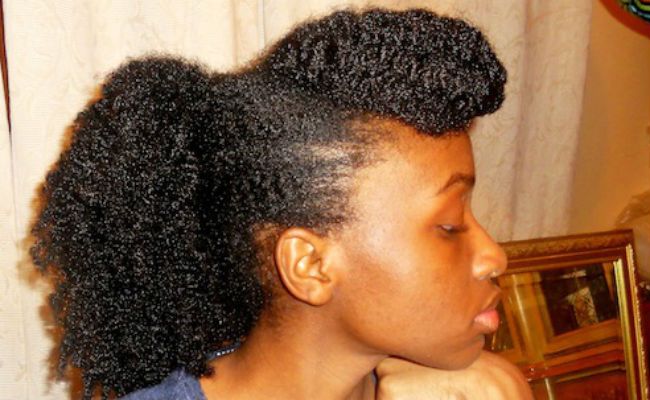
Understanding your hair texture is the most important rule in natural hair care, it is crucial to establishing a proper care routine. Still, many naturalistas are unsure of what their hair really needs. Knowing the importance of hair texture can mean the difference between beautiful bouncy styles and dull limp hair, for example.
Are you fine, medium or coarse?
Hair texture describes the overall thickness of your individual strands of hair. The three types of hair textures are fine, medium and coarse. To determine the texture of your strands, it easiest to compare those strands to the thickness of a standard string of thread. When the hair strand is thinner than the string of thread, your hair is fine. Hair strands with the same thickness as a thread are classified as medium, and thicker than the thread are coarse, according to CurlyNikki. Keep in mind, these three textures are not specific to any specific curl pattern — someone could have Type 2b wavy hair but have coarse strands, and Type 4c coily hair can be fine.
Keep in mind, these three textures are not specific to any specific curl pattern
What is Fine Hair?
Fine hair is the most delicate of hair textures; it is fragile and can be damaged easily from over-manipulation and direct heat. Fine hair is lightweight, airy, and has a level of transparency. It tends to feel like feathery baby hairs. The appearance and structure of fine hair is caused by its lack of a medulla–because there is only a cortex and a cuticle, fine hair cannot withstand extreme styling practices and chemicals.
Some of the misconceptions about fine hair are that fine hair is unable to achieve volume and cannot maintain structured styles. Both of these are false, for someone with fine hair it’s a matter of the method they use and products they apply. Choose a regimen consisting of gentle, lightweight ingredients that will not weigh down the strands and enhance the possibility of greater volume. A regimen based on lightweight ingredients prevents the cuticle from being clogged and causing the hair to appear oily.
What is Coarse Hair?
Coarse hair is the most complex of hair textures; it is the strongest and can resist damage from styling. Coarse hair strands are heavier and don’t have the light movement of fine strands. Coarse textures appear to be full in body and feel wiry. Coarse hair contains the cortex, cuticle, and medulla, which contains the proteins that allow a higher tolerance for heat, chemicals, and hair color (bleach”>.
Coarse hair is associated with kinkier hair types, which is the origin of the misconception that coarse hair does not grow.
The texture of someone’s hair doesn’t determine their growth rate. Another misconception about coarse hair is that it’s unmanageable; this is false. The manageability of coarse hair comes from proper care and a good moisturizing routine. A regimen for coarse hair requires heavier moisturizing products such as shea, mango, cocoa, and kokum butters. Coarse hair drinks these ingredients up to soften the strands, making them less wiry and reducing the potential for breakage from dryness.
Low Porosity and Texture
While caring for fine or coarse hair, it is best to consider the role that porosity plays. Low porosity hair simply means that the cuticles of the hair strand lay flat, and is commonly found in unprocessed hair. This hair type takes extra effort to get moisture inside the shaft, however, it is difficult for moisture to leak out once it has been penetrated.
Low porosity hair–for both fine and coarse hair–is not product specific. Rather, the dosage of products applied matter. Low porosity hair still requires conditioners and oils, but to a smaller degree than medium or high porosity.
If you have coarse, low porosity hair…
For someone with coarse, low porosity strands, a thicker product may need to be watered down slightly so the ingredients will penetrate the strand versus just sitting on top of the hair.
If you have fine, low porosity hair…
For fine, low porosity strands, instead of watering down thicker substance using a product with a more fluid and milky consistency would allow for your strands to benefit from the ingredients. Applying the right dose of product will result in lasting hydration, flexibility, definition, and softness of the hair strands.
To sum it up
Understanding your hair texture and porosity can help ease a variety of hair issues. Caring for fine or coarse hair with low porosity is about the quantity of the products being applied. Fine and coarse hair low porosity hair cannot flourish if they are weighed down or not receiving proper moisture. Lastly, our hair cannot be great if we don’t first understand what it truly needs.









